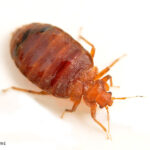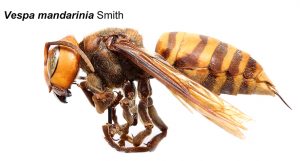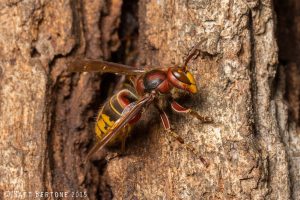 Mosquitoes can put a damper on outdoor activities. Spraying pesticides to control mosquitoes can help, but it needs to be done carefully and not endanger ourselves, our families and our environment. Here are some tips for doing this safely and smartly.
Mosquitoes can put a damper on outdoor activities. Spraying pesticides to control mosquitoes can help, but it needs to be done carefully and not endanger ourselves, our families and our environment. Here are some tips for doing this safely and smartly.
Bed Bugs Modify Microbiome of Homes They Infest
 Using floor dust samples were collected from apartments Raleigh, N.C. Researchers at North Carolina State University showed that homes infested by bed bugs appear to have different bacterial communities – often referred to as “microbiomes” – than homes without bed bugs. These microbiomes can impact on the air quality within the apartments and can affect residents of those apartments.
Using floor dust samples were collected from apartments Raleigh, N.C. Researchers at North Carolina State University showed that homes infested by bed bugs appear to have different bacterial communities – often referred to as “microbiomes” – than homes without bed bugs. These microbiomes can impact on the air quality within the apartments and can affect residents of those apartments.
Pest Management Online Courses Now Available!
HEALTH ADVISORY: Disinfectants Sold and Stored in Drinking Water Bottles and Other Inappropriate Containers
The following health advisory was released by The Texas Department of State Health Services (DSHS):
Background:
The Texas Department of State Health Services (DSHS) is reminding the public only to use disinfectant and pesticide products that are in properly labeled containers from the product’s manufacturer.
As reported to the Texas Poison Center Network, a pesticide control company in Texas has repurposed plastic drinking water bottles to sell a product used for COVID-19 disinfection. In one case, a person took a drink from a clear labeled plastic water bottle found in the refrigerator at work, then noticed the taste and found a small label saying “Virucide” stuck over the water label. In another situation, a child accidentally consumed the chemical by drinking from a water bottle. Although both cases ended up in the emergency department, there were no adverse health outcomes.
The product, Nisus DSV virucide, is a broad-spectrum disinfectant, sanitizer and virucide that can kill many different types of bacteria and viruses. EPA has determined Nisus DSV to be effective for use against the novel coronavirus, SARS-CoV-2, which is the cause of COVID-19 (https://cfpub.epa.gov/giwiz/disinfectants/index.cfm). When used correctly in accordance with the instructions on the label, disinfectant products are safe and effective. However, improper use can have harmful health effects.
Clinical Presentation:
Nisus DSV is highly corrosive with a pH of 12 and should not be consumed. The risk of harmful effects depends on the route and amount of exposure. Brief exposure may cause eye irritation and drying of skin. Longer exposures may lead to burns and blindness or other permanent eye injuries. Ingestion and inhalation of vapor from the product can irritate the throat and respiratory tract. Ingestion of high concentrations may lead to central nervous system effects and symptoms include headaches, dizziness, and drowsiness.
Recommendations for Public:
To reduce improper use and prevent unnecessary chemical exposures, users should:
- Seek immediate medical attention if you have swallowed Nisus DSV or any other disinfectant chemical or are experiencing symptoms from use of this product and contact your poison center at 1-800-222-1222.
- Always read and understand directions completely on the product label before application.
- Only use disinfectant or pesticide products that are in properly labeled containers from the manufacturer.
- Store disinfectants and cleaning products in a location out of the reach and out of sight of children. Do not store chemicals where food is stored.
- Do not mix disinfectants with soaps and detergents.
Guidance for cleaning and disinfecting public spaces, workplaces, businesses, schools and homes may be found at the Centers for Disease Control and Prevention (https://www.epa.gov/newsreleases/epa-cdc-release-guidance-cleaning-and-disinfecting-spaces-where-americans-live-work-and).
For More Information:
Anyone who believes they may have been exposed to disinfectant products and are concerned about their health should contact their healthcare provider or the Texas Poison Center Network at 1-800-222-1222.
DSHS Environmental Surveillance and Toxicology Branch
512-776-7268
epitox@dshs.texas.gov
Asian Hornets – Not A Problem in North Carolina
(Note: This is a modified version of a post we have on the NC Cooperative Extension website.)

Asian giant hornet (Matt Bertone, NC State University)
The news media have been reporting that the Asian giant hornet (Vespa mandarinia) has been found in Washington state. This actually happened back in late 20191. Previously, it had been reported in British Columbia, Canada in September 2019. This hornet lives up to its name because the queens are more than 2″ long while the workers are about 1 1⁄2″ long. The “murder hornet” nickname has been attributed to them being responsible for the death of 50 people annually in Japan, much the same way that the term “killer bees” was applied to the Africanized honey bees as it made its way up from South & Central America and into the southern U.S. What is also true is that these giant wasps have a well-deserved reputation as a pest because they attack and can destroy entire bee colonies.
It’s extremely important to understand that this insect is not found in North Carolina and we have little reason to suspect it is present here (or will be present any time soon). However, over the years, we have received numerous calls and emails from people about finding “Japanese Hornets.” and the same is happening right now. In every case, what people were seeing were European hornets, Vespa crabro, which is no wimp itself.

European hornet worker (Matt Bertone, NC State)
Adult European hornets somewhat resemble yellowjackets, but are much larger (about 1 1⁄2″) and are brown with wide yellow markings. Queens of the Asian giant hornet are more than 2″ long while the workers are about 1 1⁄2” long (see image below). The Asian giant hornets have an almost entirely yellow-orange colored head. They have a dark thorax (the body section where the wings and legs attach) and the abdomen has dark brown and black bands. The head of European hornet (seen below) is reddish-brown, becoming yellowish near the face. Also, the eyes of Asian giant hornets are smaller in relation to the size of the head compared to European hornets.
European hornet queens are busy building nests which may be hidden in hollow sections of a tree trunk or in attics. If you see large wasps entering holes/gaps in roof fascia and soffits or going under decks, Although it will take several weeks for the numbers of new workers to start increasing, NOW is the time to act before their colonies begin to grow and produce workers that will defend the nest aggressively (based on first-hand experience!). Watch for signs of wasp activity in and around your home. According to data publish by the CDC for the years 2000-2017, an average of 62 people died annually from bee/wasp/hornet stings in the U.S. with about 80% of those cases being males. A study2 published in 2014 estimated that there are about 220,000 ER-visits annually due to bee and wasp stings.
Asian giant hornets are not an issue for us at this time and not likely to be one in the near future barring some accidental introduction (as was likely the case in Washington). However, everyone needs to be aware that we have a resident hornet species that, at first glance, appears similar to the Asian giant hornet. As with any bee/wasp/hornet sting, the greatest threat is for people who are highly allergic need to be careful outdoors. Regardless of whether or not you are sensitive to such stings, always be careful and watch for signs of bee/wasp activity. Use caution when approaching a wasp/hornet nesting site and be careful when working outdoors on items that have not been disturbed for some time (like piles of wood). If you find a wasp that fits the description of the Asian giant hornet, contact your local County Cooperative Extension Center
You can also submit images online to the NC Plant Disease and Insect Clinic (NCPDIC).
If you are a beekeeper, you can check out Asian Giant Hornets Not a Problem for NC Beekeepers…yet? by Dr. David Tarpy.
You can also read a blog post by Dr. Matt Bertone, Director of the NC Plant Disease and Insect Clinic. Plus, we have information about the European Hornets in North Carolina.
Reference cited:
2/ New Pest Response Guidelines – Asian Hornet, Vespa mandarinia. USDA-APHIS
2/ Langley, R.L., Mack, K., Haileyesus, T., Proescholdbell, S., and Annest, J.L. National estimates of noncanine bite and sting injuries treated in US hospital emergency departments, 2001–2010. Wilderness Environ Med. 2014; 25: 14–23>

